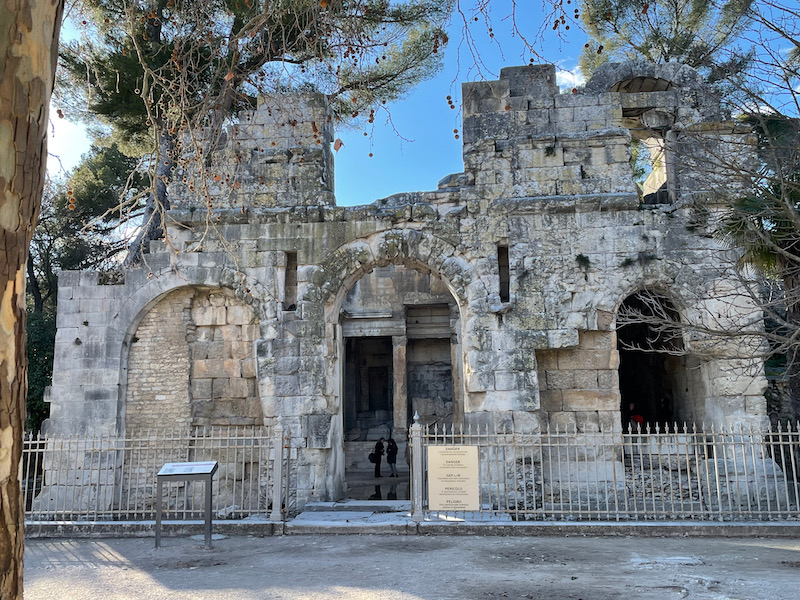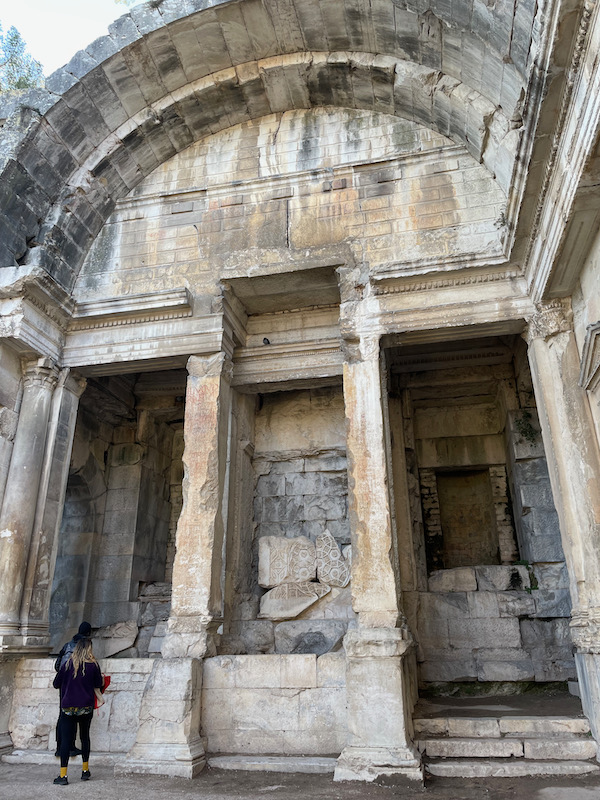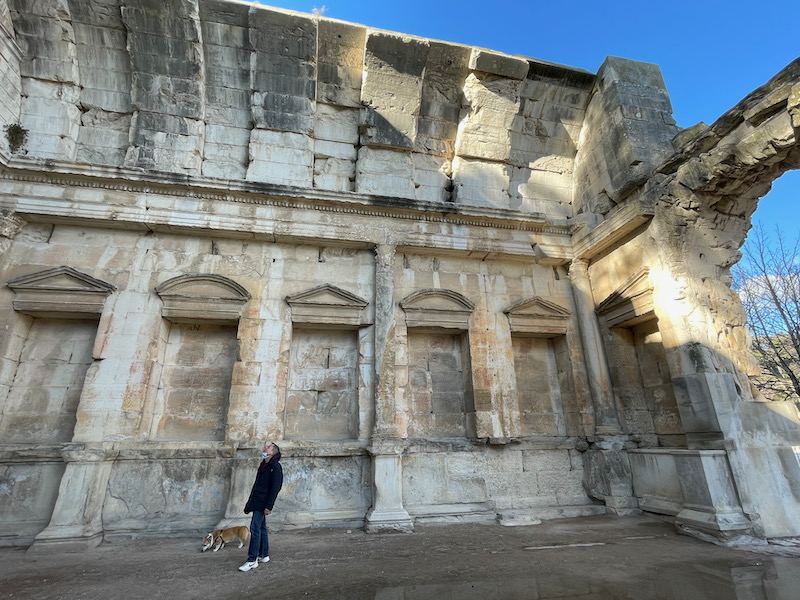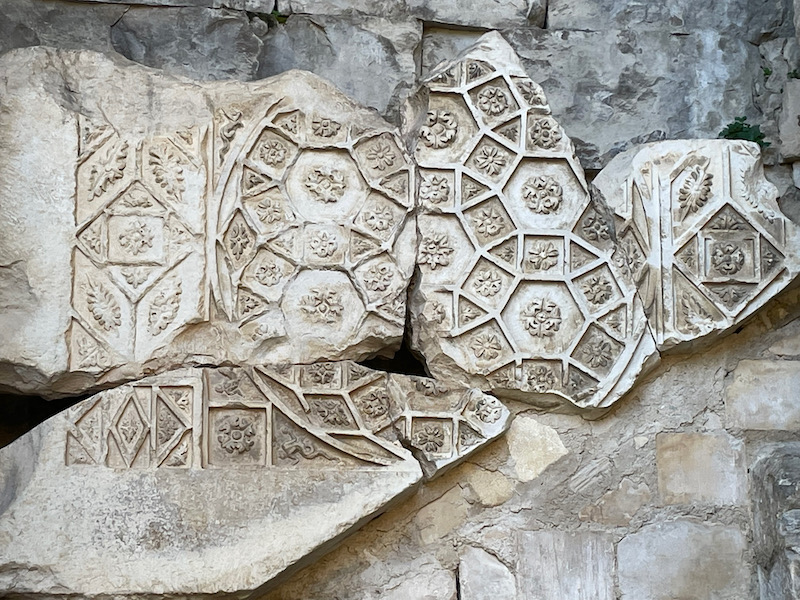Our Blog - Nîmes, France
The history of Nîmes goes all the way back to 4000 BC with the presence of semi-nomadic cultivators. A menhir was found that dates to about 2500 BC and is considered the oldest monument of Nîmes. The Roman province Gallia Transalpina was established in 121 BC and from 118 BC, the Via Domitia was built through the area. There was a major building program in the city by Emperor Augustus including building a ring of ramparts with 4 towers. Two of the gates, Porta Augusta and the Porte de France, still remain today. A point of trivia: the city was the birthplace of the family of emperor Antoninus Pius.
The Maison Carrée (which translates to "square house"), was built in the late 1st century BC. It is one of the best-preserved temples to be found anywhere in the former Roman Empire, and is almost totally intact. It inspired the neoclassical Église de la Madeleine in Paris and Virginia State Capitol, which was designed by Thomas Jefferson who had a stucco model made of the Maison Carrée while he was minister to France in 1785. It is a classic example of Vitruvian architecture and nearly an exact replica of a Tuscan-style Roman temple described in the writings. The façade contains a deep portico that is almost a third of the building's length and is richly decorated in terms of its columns and capitals. It was not open as they are doing some work inside.
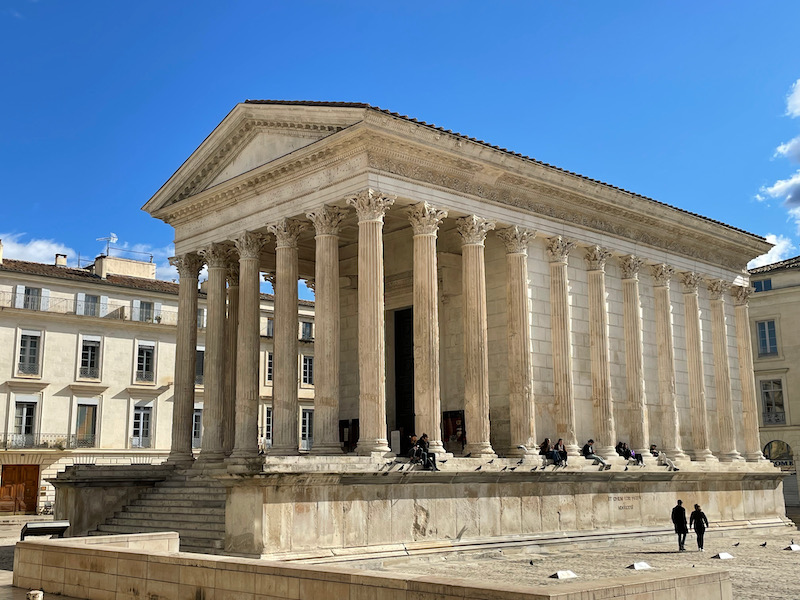

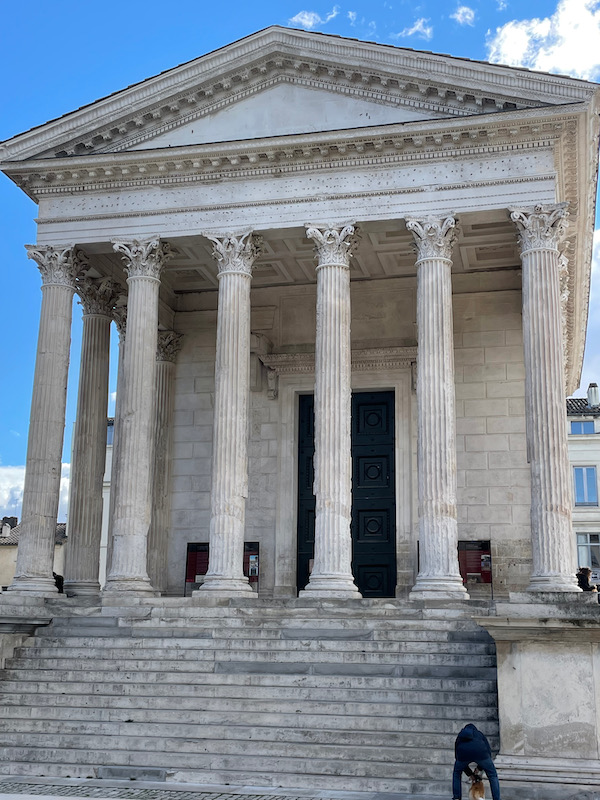
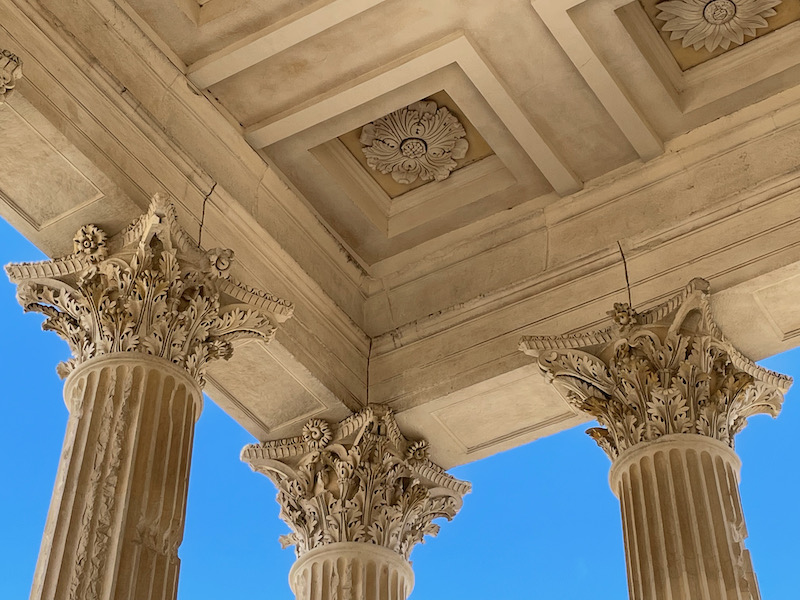
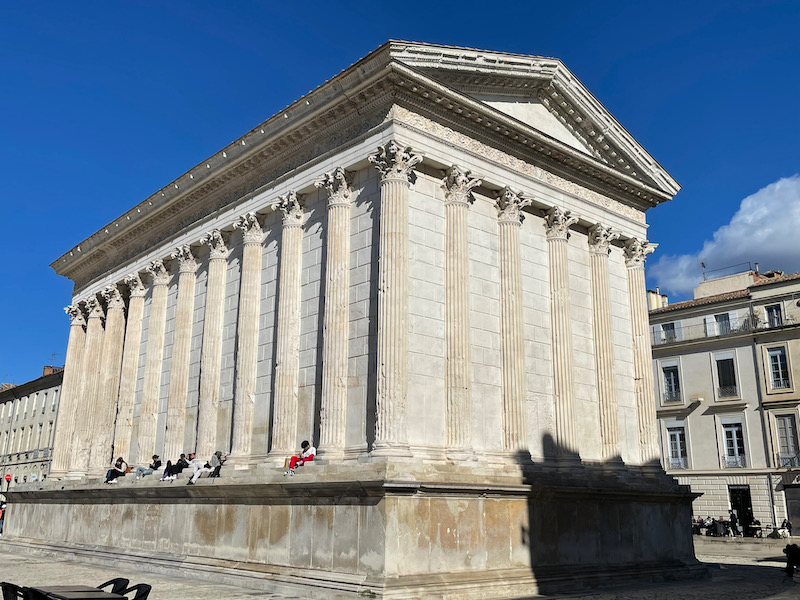
If you read my blog on Arles, you can compare the arena there to this Roman arena. Built around 70 AD, shortly after the Colosseum of Rome, the arena in Nîmes is one of the best-preserved Roman amphitheaters in the world. In Roman times, the building could hold 24,000 spectators, who were spread over 34 tiers of terraces divided into four self-contained zones, and gladiator contests and wild animal hunts were hosted here. After the fall of the Roman Empire, the arcades of the arena were blocked up for defense and a large number of people from the town took refuge inside, making it a fortified castle. Under the Renaissance, King Francis I decided to return the arena to its former glory, and the houses began being removed in 1786.

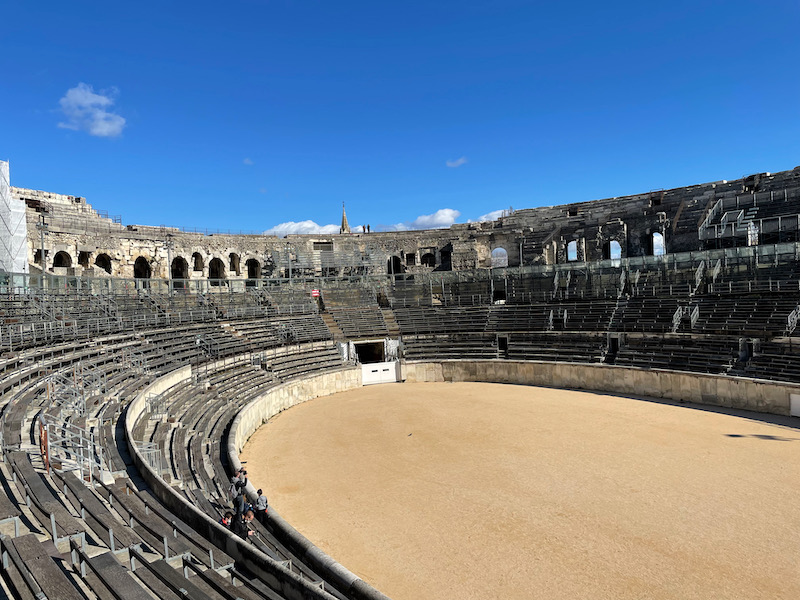
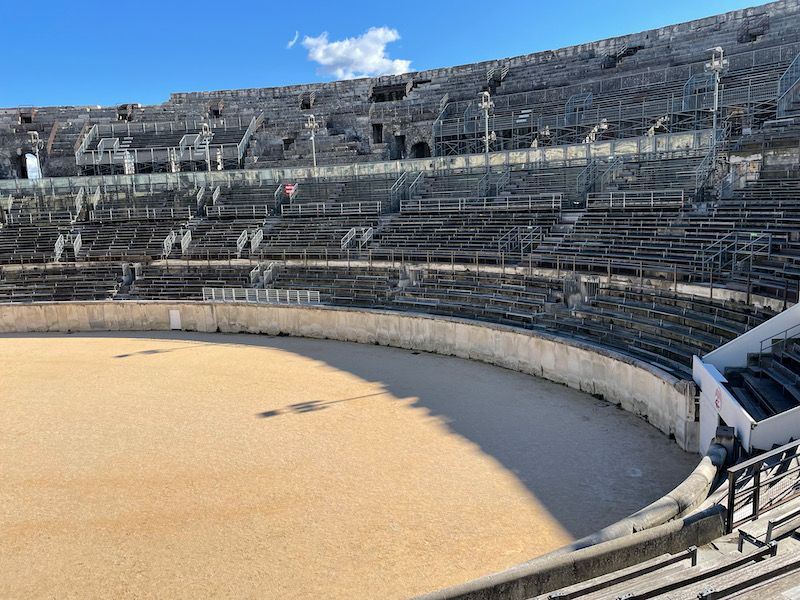
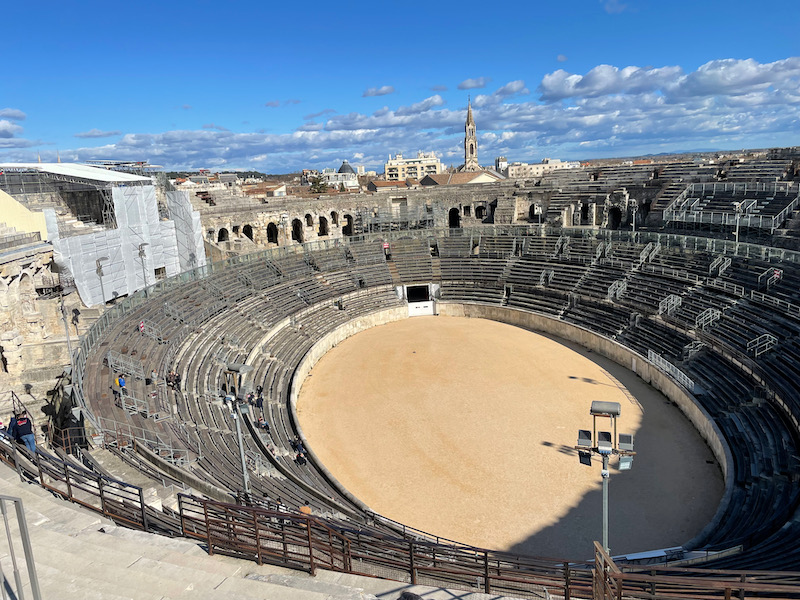
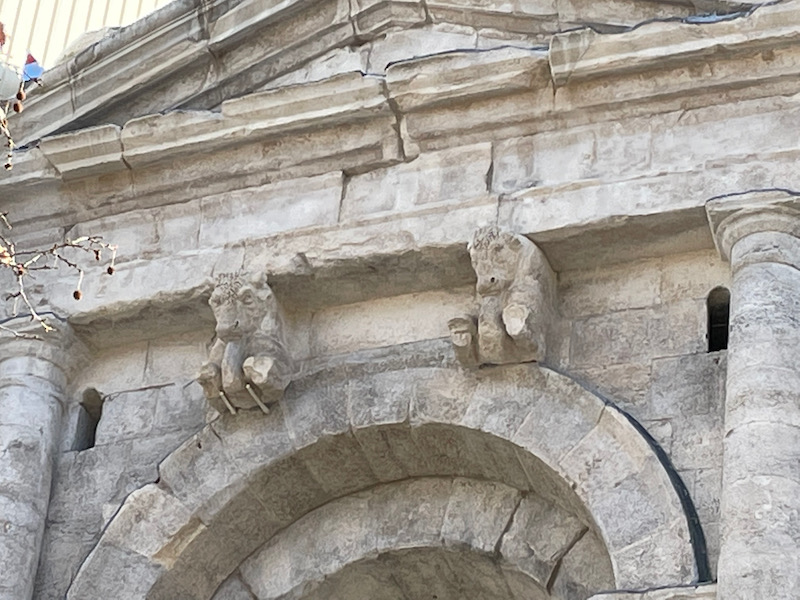
Similar to the arena in Arles, this also has the tall, flat stones around the base of the arena floor, separating it from the stands.
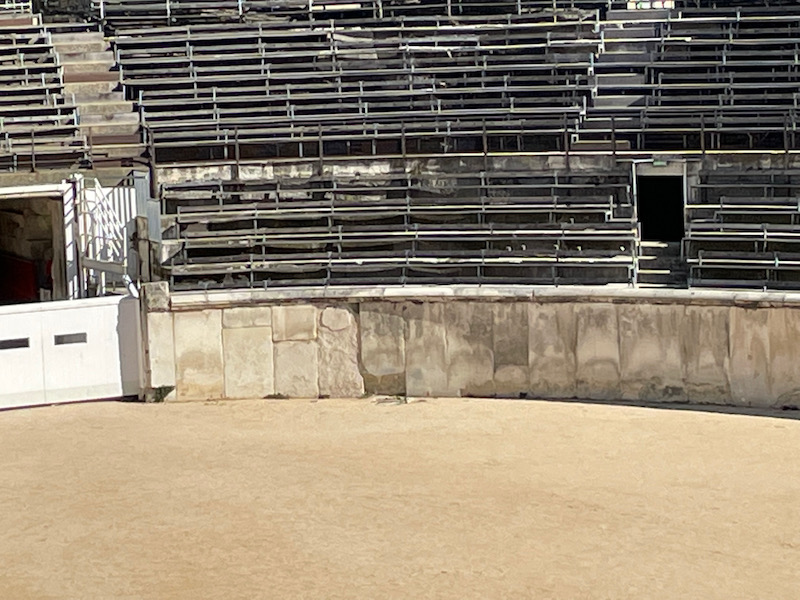
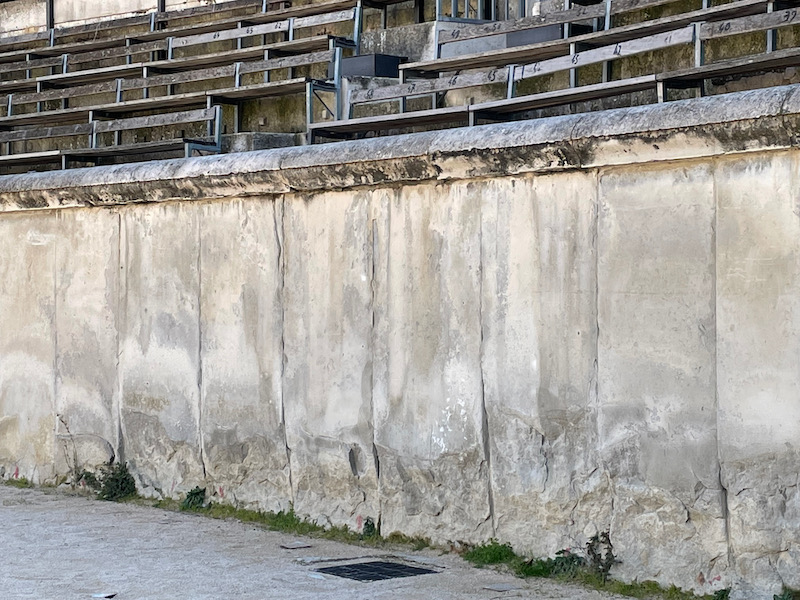
Here you can see the multiple tiers of arcades and the system of stairs and corridors.
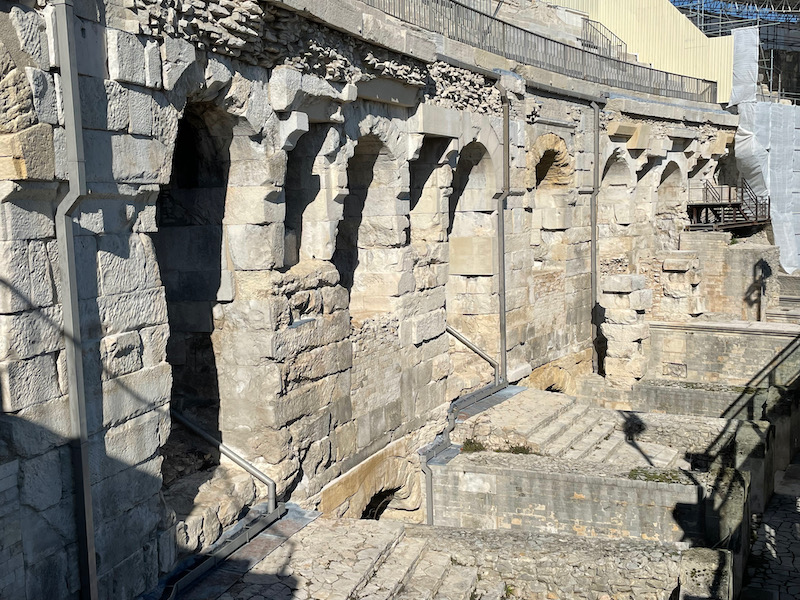
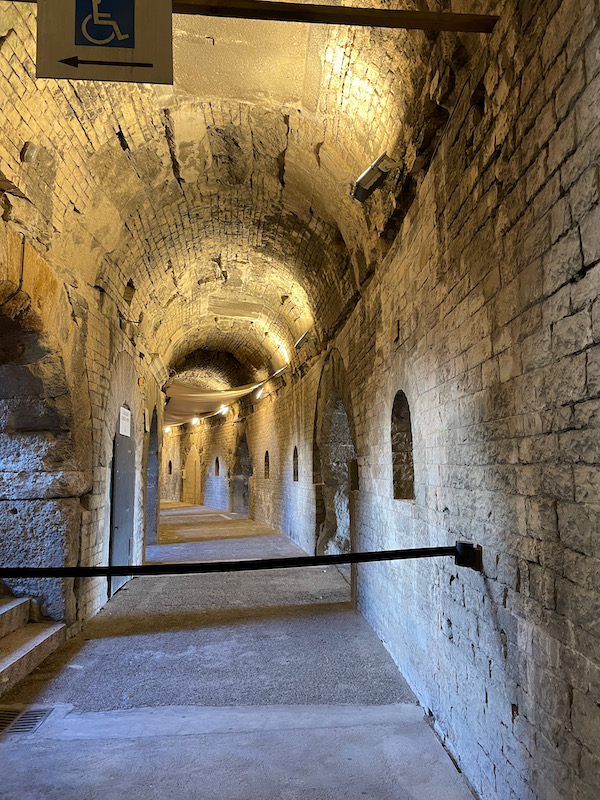
In the beginning of the 15th century, the consuls of Nîmes built a tower adjoining the consular house to ring out the hours and to call councillors to attend meetings. The Tour de l'Horlage remained the symbol of municipal power even after the town hall was relocated in 1702. It was rebuilt in 1754 to keep it from collapsing. The consular house was demolished in the end of the 19th century, leaving the tower intact.
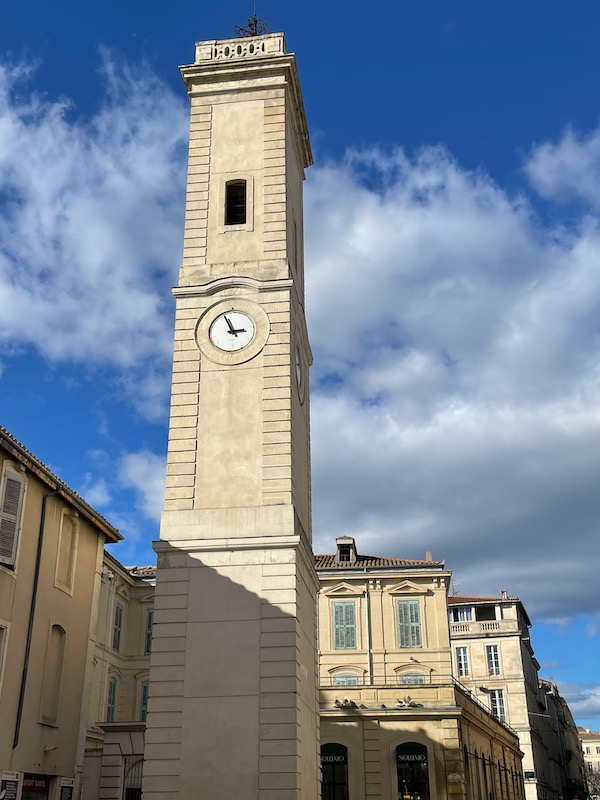
The great Nimes Aqueduct was built to bring water from the hills to the north into the Roman city. The most famous remains of this is Pont du Gard, the spectacular bring where it crosses the river Gard about 12 miles northeast of the city. The aqueduct delivered the water to a "castellum aquae", a basin that collected the water and distributed it throughout the city. If you look on the back wall, you can see a large square opening ... this is where the water would come into the basin from the aqueduct. Then in the front, you can see 4 circular openings where pipes would carry the water to various parts of the city, including the public fountains.
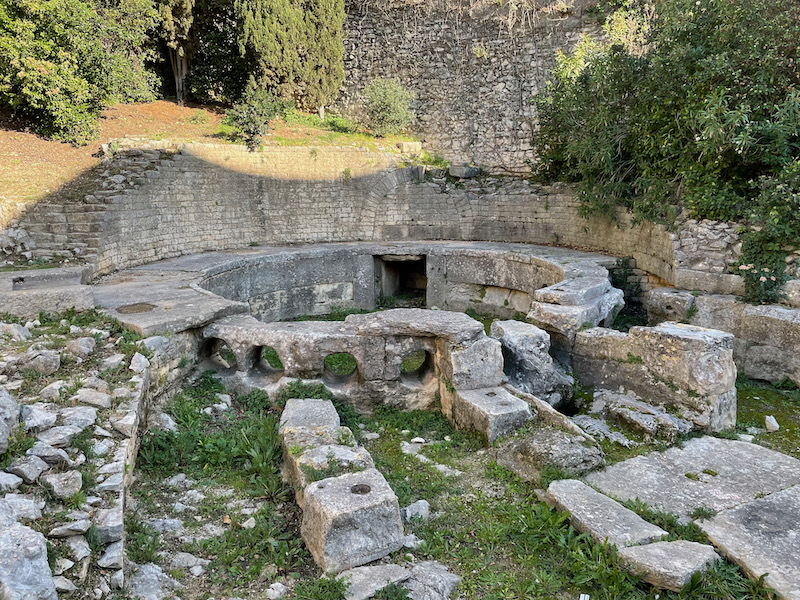
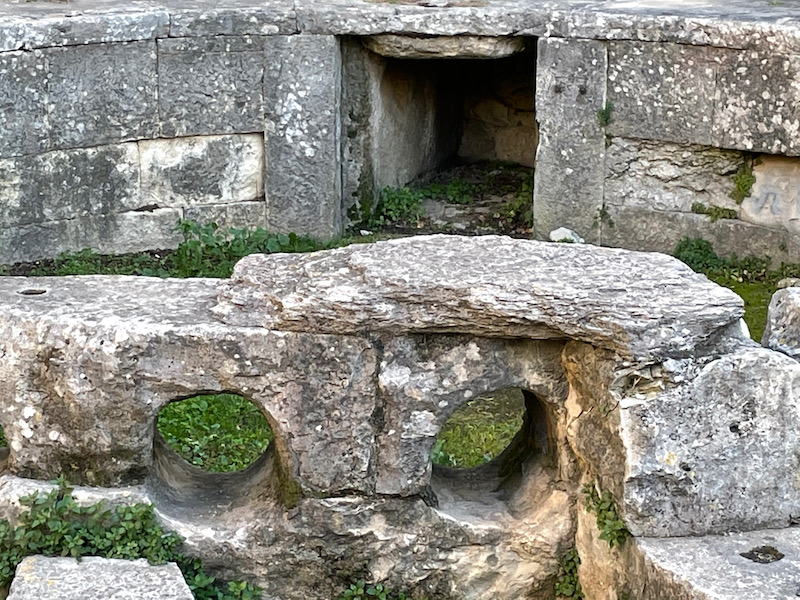
At the top of Mont Cavalier, you can see the Tour Magne. Supposedly, this tower actually is a pre-Roman building dating from the 3rd century BC. The original 18 meter high tower was changed under Emperor Augustus to be 36 meters tall. Around the outside are still parts of the original Roman walls.
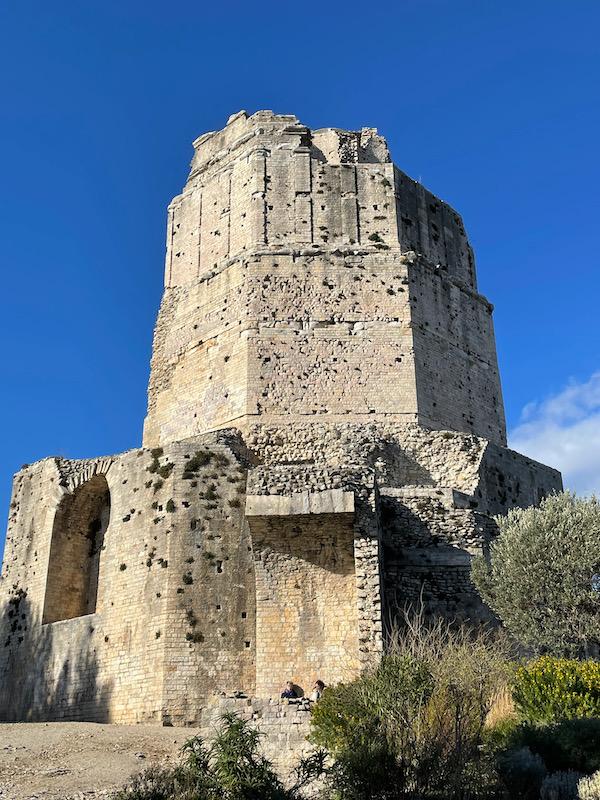
Below the hill and tower are the Gardens of the Fountain. The gardens were created between 1745 and 1755 after excavations in the area brought to light several vestiges of the Roman era. The gardens highlight the Tour Magne (above the gardens) and a Roman temple. There are paths that zigzag down the hill to a monumental staircase, that then leads to several water basins with fountains.
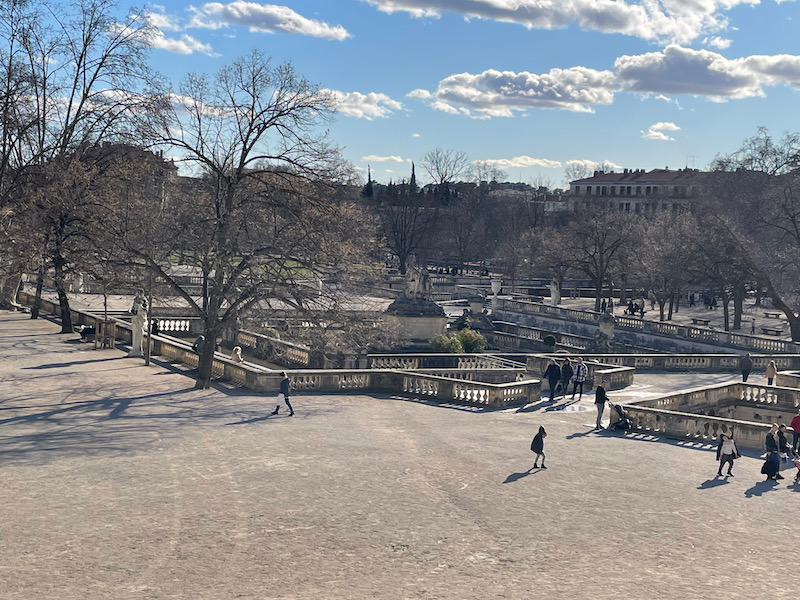
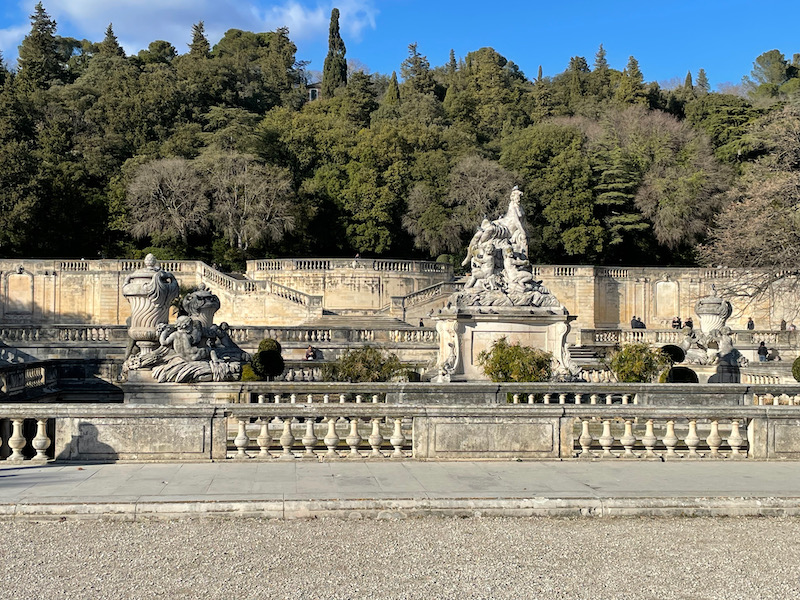
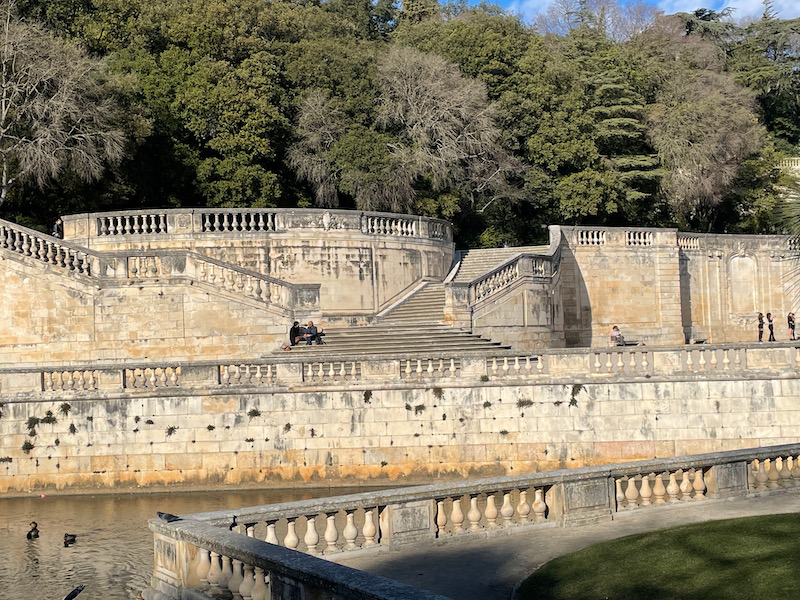
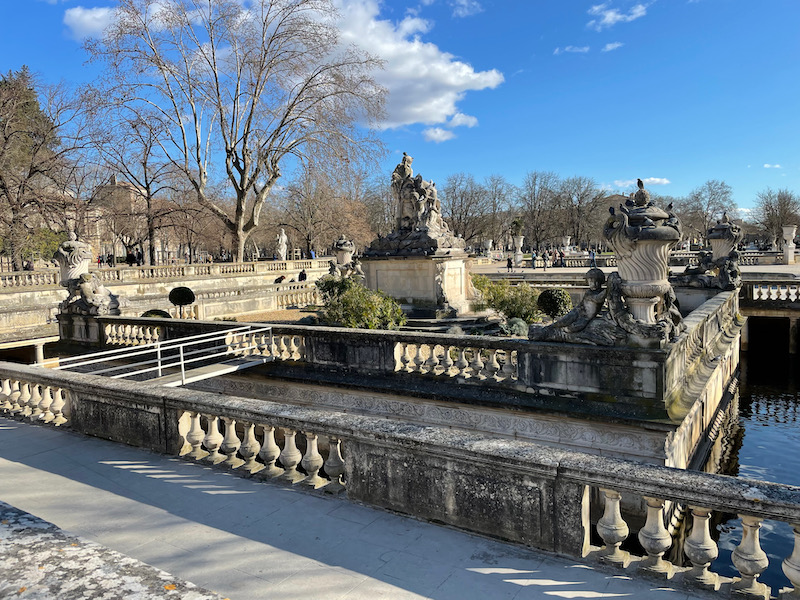
And lastly, the Temple of Diana. This is the Roman temple that was found on this site. Although it is called the Temple of Diana, it most likely was part of an Augusteum, a sanctuary devoted to the Emperor Augustus. Built during the time of Augustus, it was renovated during the 2nd century and housed a monastery in the Middle Ages. In the late 1700's and early 1800's, it was the subject of several paintings (3 by Hubert Robert and 1 by Charles Leopold Emile Henry). You can see some of the carved stone decorations as well as the nice semi-circular roof structures.
